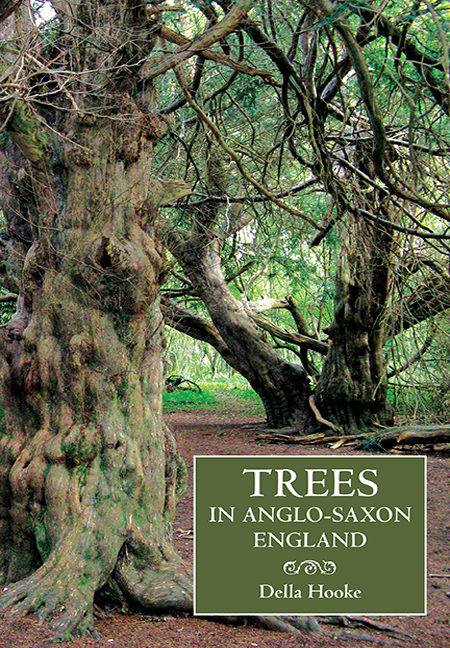Book contents
- Frontmatter
- Contents
- List of Illustrations and Tables
- Preface and Acknowledgements
- List of Abbreviations
- PART I Tree Symbolism
- Chapter 1 Trees and Groves in Pre-Christian Belief
- Chapter 2 Christianity and the Sacred Tree
- Chapter 3 Trees in Literature
- Chapter 4 Trees, Mythology and National Consciousness: into the Future
- PART II Trees and Woodland in the Anglo-Saxon Landscape
- PART III Individual Tree Species in Anglo-Saxon England
- Epilogue
- Bibliography
- Index
- Anglo-Saxon Studies
Chapter 4 - Trees, Mythology and National Consciousness: into the Future
from PART I - Tree Symbolism
Published online by Cambridge University Press: 09 May 2017
- Frontmatter
- Contents
- List of Illustrations and Tables
- Preface and Acknowledgements
- List of Abbreviations
- PART I Tree Symbolism
- Chapter 1 Trees and Groves in Pre-Christian Belief
- Chapter 2 Christianity and the Sacred Tree
- Chapter 3 Trees in Literature
- Chapter 4 Trees, Mythology and National Consciousness: into the Future
- PART II Trees and Woodland in the Anglo-Saxon Landscape
- PART III Individual Tree Species in Anglo-Saxon England
- Epilogue
- Bibliography
- Index
- Anglo-Saxon Studies
Summary
As shown in Chapters 1 and 2, trees had long been used, along with stones, mounds and other features (including giant posts) to mark places of assembly. In pre-Christian times diviners and enchanters met at large, significant trees which were held to be sacred to carry out their offices. As Flint expresses it, these were focal points of reverent expectation, places to which people came to stave off terrors, appease their anxieties, pour out their desires of their hearts, to seek comfort and help in sadness. The giant oak at Geismar destroyed by Boniface, the Irminsul destroyed by Charlemagne, and the great sacred tree decorated with a golden image of a viper destroyed by St Barbatus of Benevento (d. 682), recorded in a ninth-century compilation, may have been examples of such trees, while in the Besle valley (Pays-de-la-Loire, France) St Valery found a great tree trunk ‘carved with all kinds of images’. After the acceptance of Christianity, however, the great mythological trees were to virtually disappear from the national consciousness of Western Europe, although the World Tree of Indo-European lore lingered on in Norse mythology as Yggdrasill until medieval times and remained central to many East European and other worldwide cultures. None survived in England with any degree of powerful symbolism. However, they lived on in Irish mythology.
Certain Celtic tribes in Gaul had been associated with particular species of tree. The Ebutones were the ‘Yew Tribe’, the Lemovices, ‘the people of the elm’, and the five sacred trees of Ireland became legendary guardians of five Irish provinces. The five most sacred trees of mythology and legend: Eó Mugna (an oak which bore acorns, apples and nuts), Eó Rossa, ‘the tree of Ross’ (a yew), Bile Tortan, ‘Tortu's tree’ (an ash), Craeb Daithi, ‘the branch of Dath-I’ (also an ash), and Bile or Craeb Uisnig (another ash), had stood at the centre of five provinces. All were connected with legendary kings, only becoming manifest as these kings had been born, as in the stories of Conn Cétchathach, or had begun to establish their dynasties. It seems that a bile was regarded as an appropriate adjunct to a chiefly or kingly residence. Thus, the sacred tree was intimately connected with the concept of kingship, wisdom and sovereignty and possibly marked the site of the king's inauguration.
- Type
- Chapter
- Information
- Trees in Anglo-Saxon EnglandLiterature, Lore and Landscape, pp. 96 - 110Publisher: Boydell & BrewerPrint publication year: 2011



